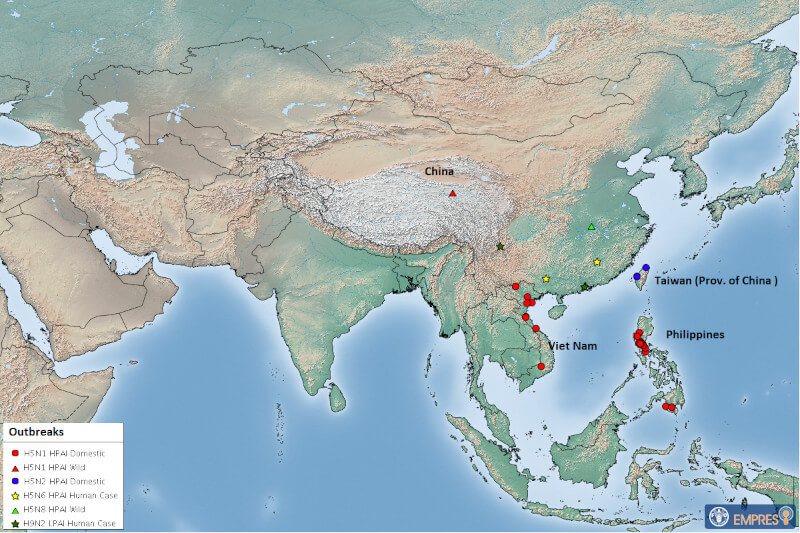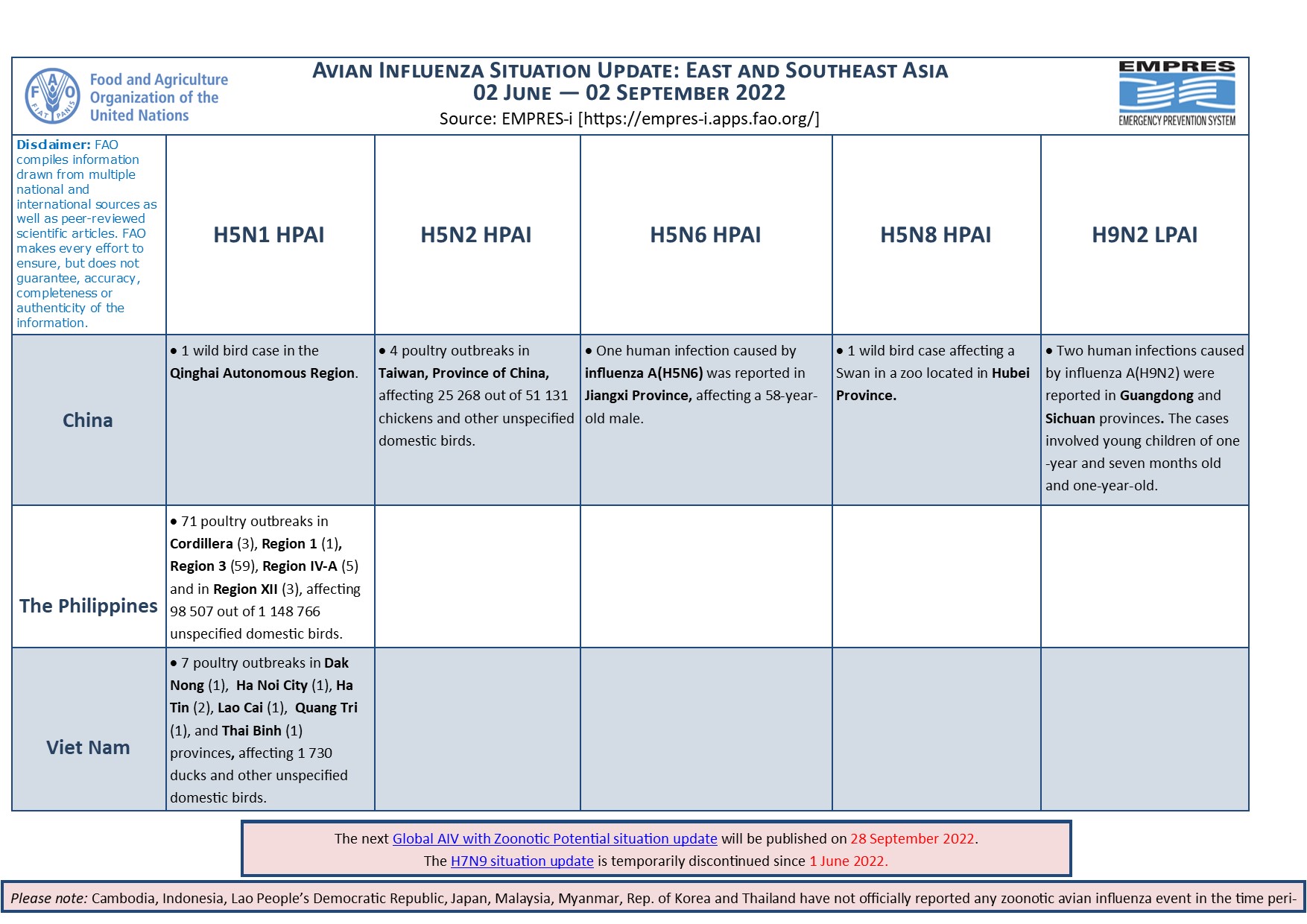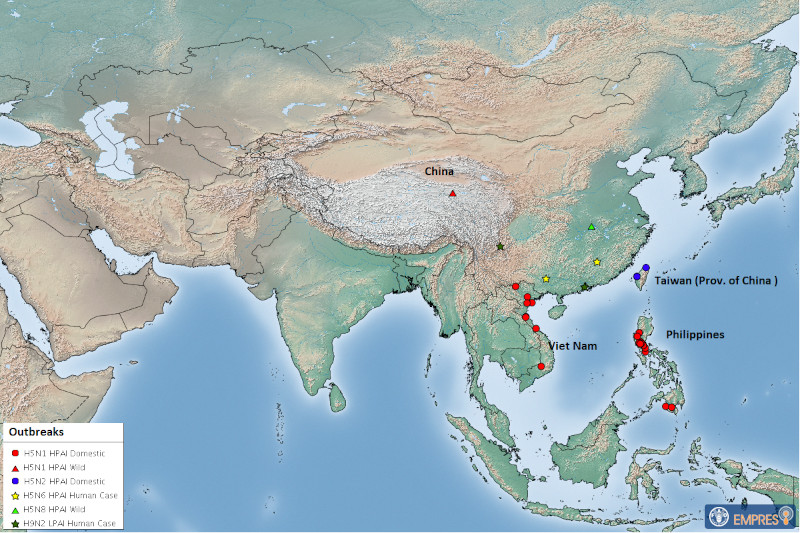FAO/EMPRES-AH is constantly monitoring the avian influenza situation worldwide and compiles information from multiple national and international sources as well as peer-reviewed scientific articles. Close collaboration with country and regional offices, the implementation of avian influenza field surveillance projects, and networks of expertise like OIE/FAO’s OFFLU (www.offlu.org) provide access to timely information on outbreaks, surveillance findings, and genetic similarities of circulating viruses or their virological features. This information is stored in the EMPRES Global Animal Disease Information System (EMPRES-i), a database that can be accessed online at https://empres-i.apps.fao.org/.

Avian Influenza in East and Southeast Asia from 02 June to 02 September 2022 ©EMPRES-I
During the period 02 June to 02 September 2022, four highly pathogenic avian influenza (HPAI) virus subtypes (H5N1, H5N2, H5N6, and H5N8) and one low pathogenic avian influenza (LPAI) virus subtype (H9N2) have been reported in East and South-East Asia. While there are less countries reporting HPAI in the region as compared to previous reporting periods, H5Nx HPAI viruses continue to circulate in Southeast and East Asia and are quite active in certain areas of the region. Viet Nam officially reported seven H5N1 HPAI outbreaks in domestic birds in Dak Nong (1), Ha Tin (2), Lao Cai (1), Quang Tri (1), and Thai Binh (1) provinces, and in Ha Noi City (1). H5N1 HPAI activity has flared up in the Philippines and caused 71 poultry outbreaks over this reporting period in Cordillera (3), Region 1 (1), Region 3 (59), Region 4-A (5), and in Region 12 (3), affecting 98 507 out of 1 148 766 unspecified domestic birds. In addition, H5N1 HPAI was detected in a wild bird in Qinghai Autonomous Region, China. This region of China is characterized by significant wild bird congregation sites, providing favourable conditions for avian influenza virus circulation and reassortments. H5N8 HPAI was detected in a captive Swan (Cygnus sp.) from the Wuhan zoo located in Hubei Province, China. Taiwan Province, China reported four H5N2 HPAI outbreaks affecting 25 268 out of 51 131 chickens and other unspecified domestic birds.
Furthermore, China reported one influenza A(H5N6) human infection in Jiangxi Province, affecting a 58-year-old male. Since 2014 (as of 2 September 2022), there have been 80 A(H5N6) human infections reported globally and 79 of them occurred in Mainland China, the latest case being reported on 27 June 2022. In addition, two human infections caused by influenza A(H9N2) were reported in young children in Guangdong and Sichuan provinces, China.
Highly pathogenic H5N1, H5N2, H5N5, H5N6, and H5N8 viruses have demonstrated the ability to spread via migratory water birds.
We expect avian influenza activity in Asia to be lower in the period from June to September, however reports of outbreaks in poultry or detections in wild birds and humans are expected to increase in the region over the coming months.






